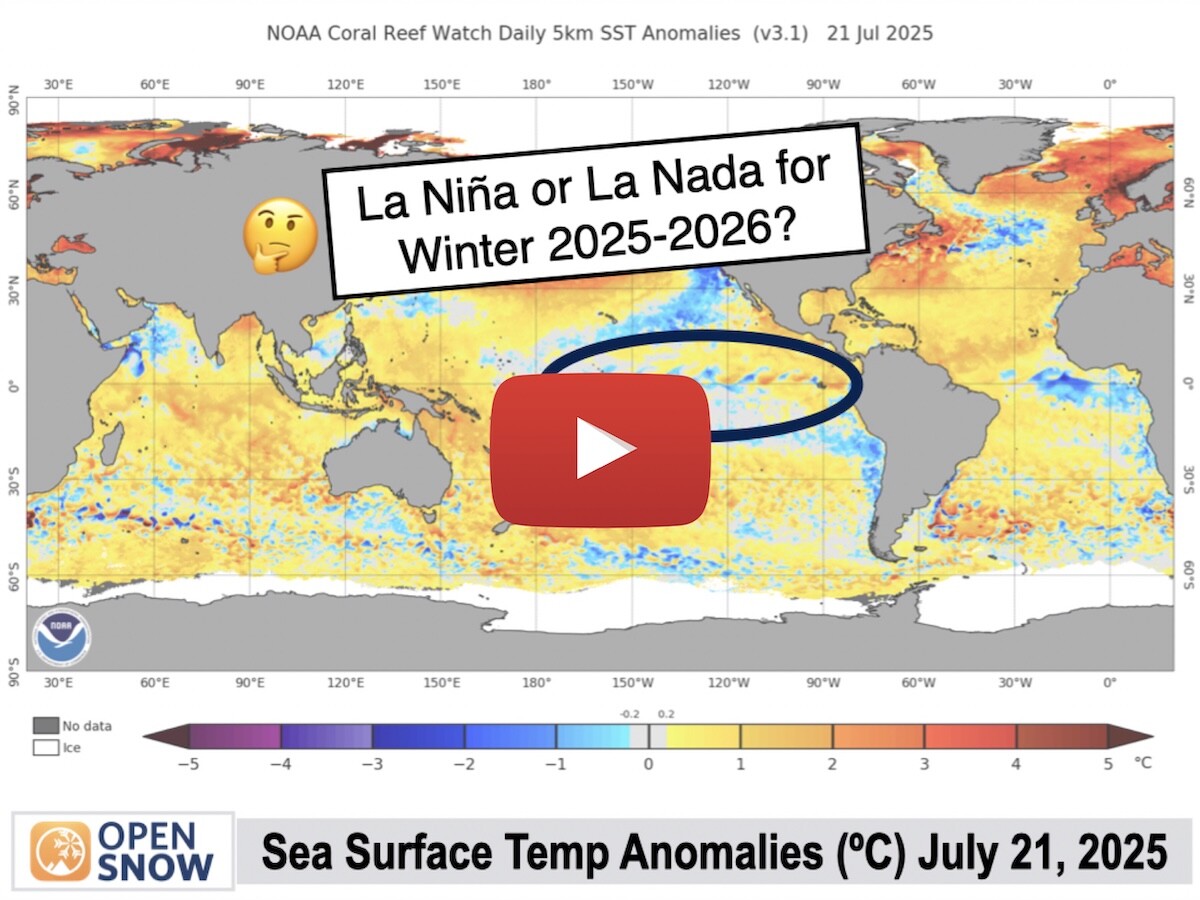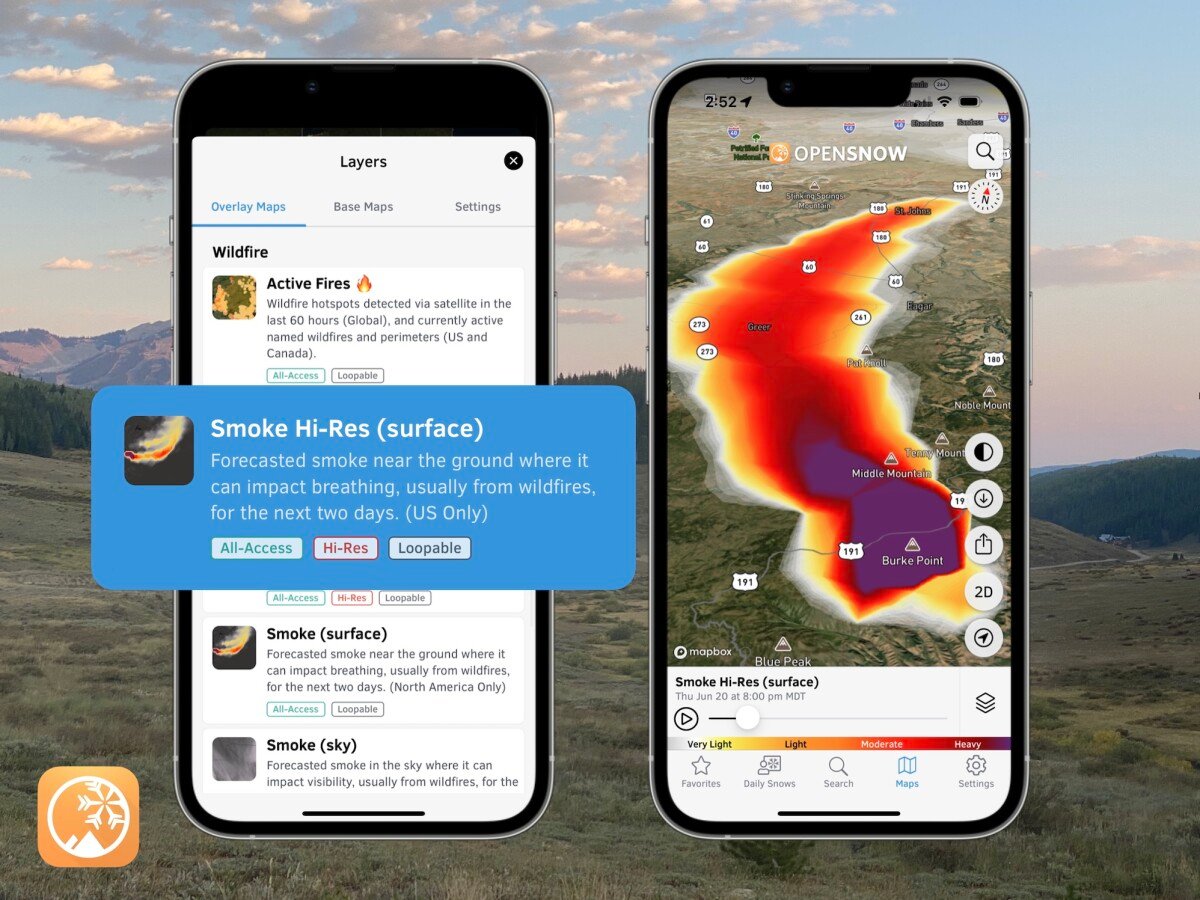Western US Daily Snow

By Alan Smith, Meteorologist Posted 25 days ago July 1, 2025
Thunderstorm Activity Picking Up Across the Southwest and the Rockies
Summary
Monsoon moisture will increase across the Southwest & the Rockies this week, leading to a notable increase in thunderstorm activity. The Southwest & Southern Rockies will be most active Tue-Thu, while the Northern Rockies will see an uptick from Thu to Sat. Next week, a more seasonal early monsoonal pattern will settle in across the Southwest & CO Rockies while most of the West will heat up.
Short Term Forecast
Helpful Links:
Tuesday Afternoon Conditions:
Monsoonal moisture is increasing across the Western U.S. right now, leading to a significant uptick in thunderstorm activity in many areas. This monsoon moisture surge is being fueled by the remnants of Hurricane Flossie in the Eastern Pacific.
Our Lightning Strike & Risk Map as of 3:33 pm on Monday afternoon shows thunderstorms covering the Southwest, Central Rockies, and portions of Northern California and Southern Oregon.

5-Day Temperature Outlook:
While the past few days have been hot across parts of the West, a serious of upper-level weather systems along with an uptick in moisture will prevent any major heatwaves from occurring during the remainder of this week.
The Southwest will be favored for below normal temperatures over the next 5 days, while the Northern Rockies will see slightly above normal temperatures. Temperatures will be near to slightly below normal along the West Coast.

Wednesday (July 2):
Southerly winds ahead of a low pressure trough over Southern California will continue to feed monsoonal moisture into the Western U.S. An area of high pressure over Colorado will also help to funnel this moisture from Arizona and New Mexico into Utah and Wyoming.
Areas in the green shaded region will be favored for more numerous thunderstorms with heavy rain possible, while flash flooding is also possible in slot canyons and dry washes in the desert.
In the mountains, the San Juan Range will see greater thunderstorm coverage compared to the rest of Colorado, while an uptick is also expected over the Wasatch and Uinta Ranges in Utah and in the Wind River Range in Wyoming.
The orange arrows in the map indicate the prevailing winds aloft and typical storm motions.

A secondary area with scattered afternoon thunderstorms will cover a large region from the Sierra Nevada Range to the Great Basin to the Northern Rockies and into Central Colorado.
Low-level moisture will be somewhat lacking in these areas, with most thunderstorms producing light to moderate rain and gusty winds. Areas with dry fuels and high fire danger will also be at risk for lightning-triggered wildfires.
The dotted orange arrows indicate prevailing winds aloft and expected storm motions.

Thursday (July 3):
This looks like the most active day of the week for the West as a whole, as two shortwave troughs move into the Rockies, and moisture levels continue to rise.
Numerous thunderstorms are expected across the Southwest and across the Central and Northern Rockies, with heavy rain possible under stronger storms. Flash flooding will remain a threat in vulnerable slot canyons and dry washes in the desert, as well as over fire burn scars.
Storms are also possible before noon over the higher peaks, so make sure you start early if you have high elevation hiking or peak bagging plans.

Secondary focus areas include Eastern Oregon and the Great Basin, where isolated to scattered thunderstorms will produce light to moderate rainfall. Lightning-triggered wildfires will also be a threat across this region.
Also, the Front Range foothills east of the Continental Divide in Colorado and Wyoming will see more of an isolated thunderstorm threat with southerly aloft winds making it tough for storms to move out onto the plains. Thunderstorm coverage will be higher west of the Divide in Colorado compared to east of the Divide.

Friday (July 4):
The Fourth of July will feature a drying trend across the Southwest, while the Northern Rockies are looking at an active day as a robust shortwave trough moves across the area with abundant monsoonal moisture in place.
The result will be numerous thunderstorms from Eastern Oregon to Idaho to Wyoming and Montana with heavy rain possible. While the afternoon and evening hours will feature the greatest thunderstorm coverage, storms are also possible during the morning.

Areas further south from the Great Basin to Central Utah and Colorado will see a decrease in moisture and more isolated to scattered thunderstorm coverage. Storms will still develop over the higher mountain ranges, but coverage and intensity should be lower compared to Thursday.
Much of Arizona and New Mexico will end up with a storm-free day on Thursday, but lingering moisture over Southeast Arizona (including the mountains around Tucson) will result in isolated to scattered thunderstorms.

Saturday (July 5):
A shortwave trough will continue its journey across the Northern Rockies, with the focus of thunderstorm activity expected across Montana, especially east of the Continental Divide. Heavy rain will be possible with stronger thunderstorms across this region.
To the south, isolated thunderstorm activity is expected mainly near the Continental Divide in Colorado with drier conditions expected across Western Colorado.

Sunday (July 6):
Many areas of the West will see a break in the pattern, but easterly low-level winds will develop east of the Continental Divide, which will transport moisture into Central and Eastern New Mexico, resulting in an uptick in thunderstorms.
Limited moisture will also reach the eastern ranges of Colorado and Wyoming, with isolated thunderstorms possible.
Thunderstorm coverage looks limited west of the Divide as a lull in the monsoon occurs.

Extended Forecast
Outlook for Mon (July 7) to Fri (Jul 11):
Next week, an early season monsoon pattern will re-emerge over the Southwest with Arizona, New Mexico, and Colorado favored for thunderstorm chances. The eastern ranges and adjacent plains of Colorado and Wyoming could see some periods of easterly upslope winds as well, which would favor thunderstorms.

Temperatures are also expected to heat up across most of the West as a ridge of high pressure builds, with the highest confidence of above-normal temperature anomalies expected over the Interior Northwest and Northern Rockies.

Thanks so much for reading! Next update on Thursday (July 3).
Alan Smith
About Our Forecaster




